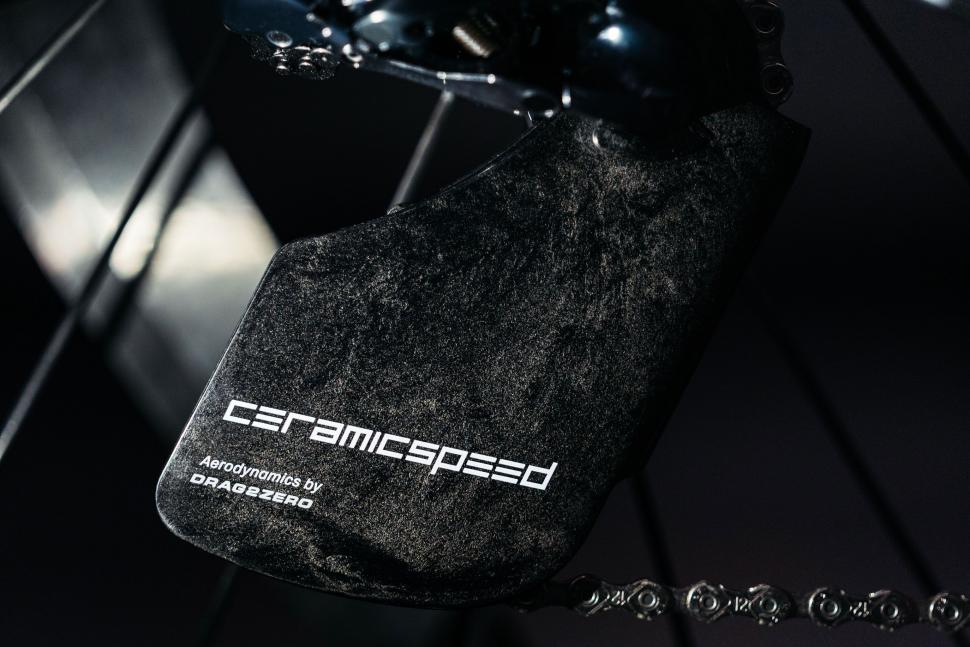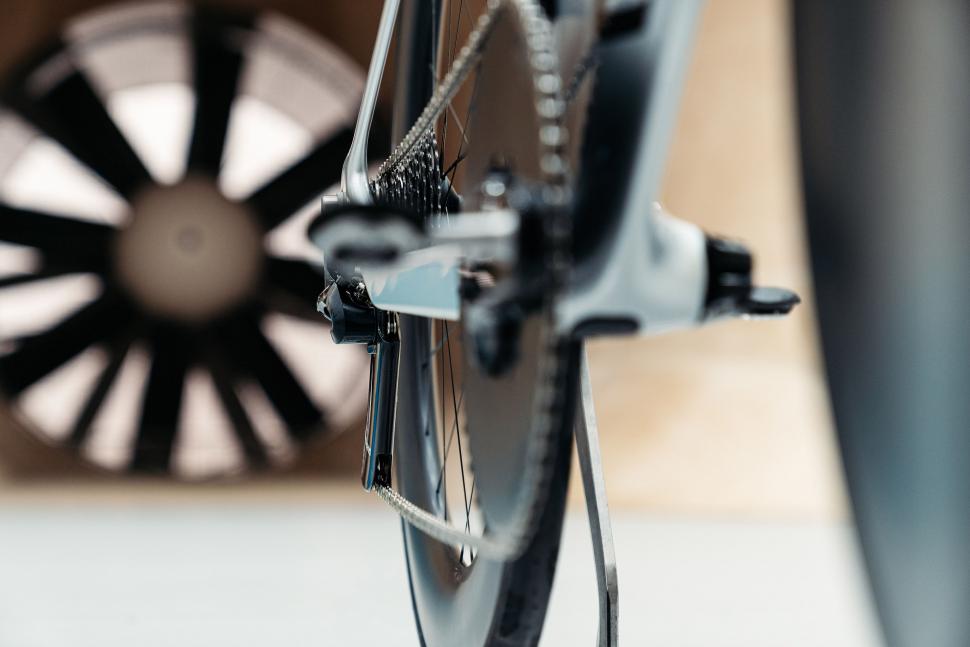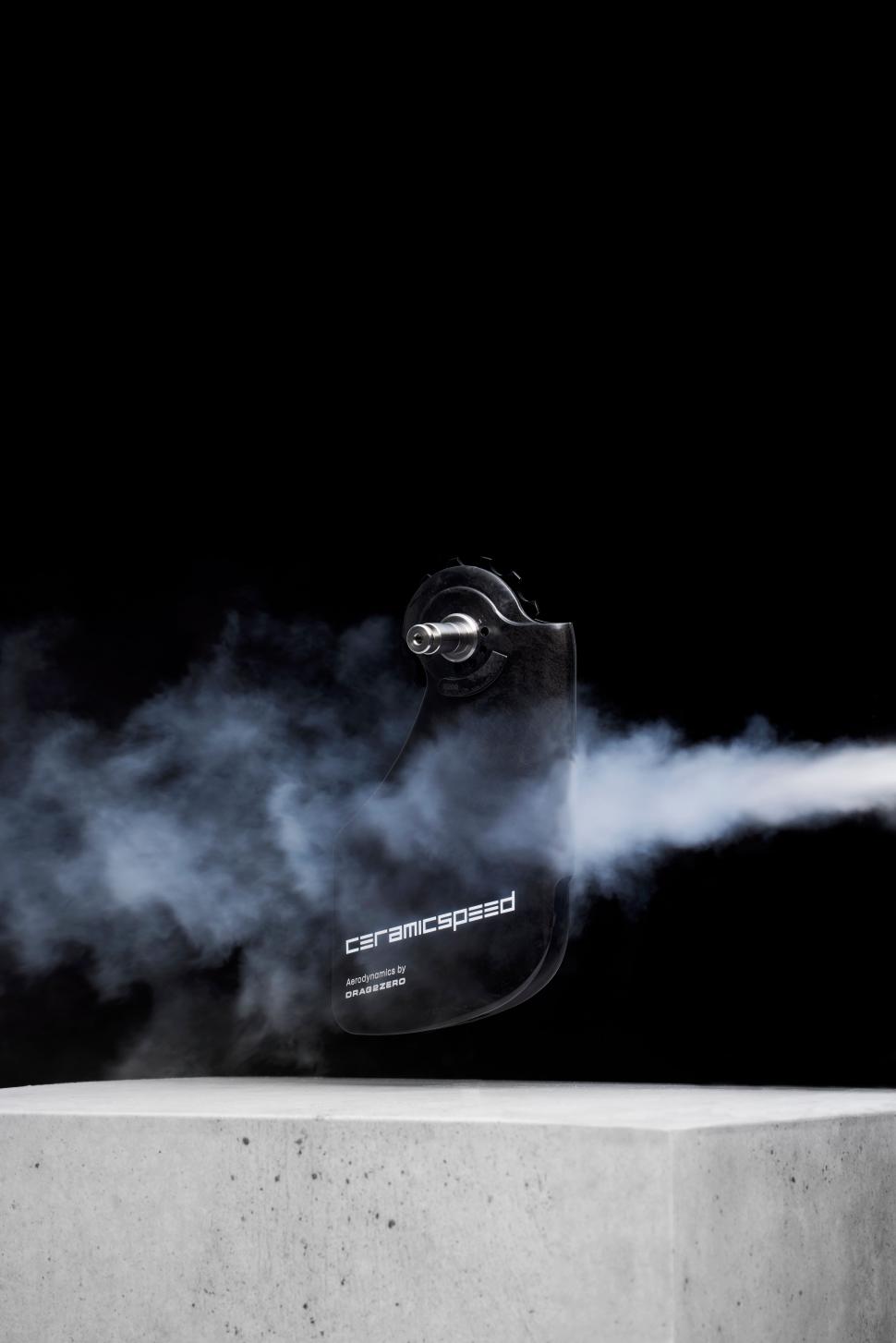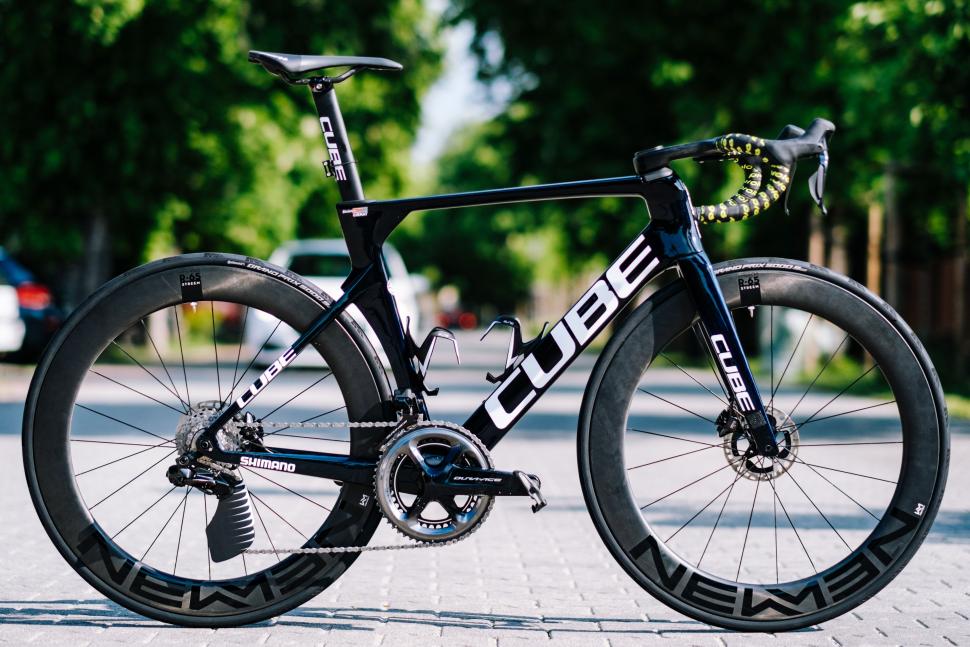- News
- Reviews
- Bikes
- Components
- Bar tape & grips
- Bottom brackets
- Brake & gear cables
- Brake & STI levers
- Brake pads & spares
- Brakes
- Cassettes & freewheels
- Chains
- Chainsets & chainrings
- Derailleurs - front
- Derailleurs - rear
- Forks
- Gear levers & shifters
- Groupsets
- Handlebars & extensions
- Headsets
- Hubs
- Inner tubes
- Pedals
- Quick releases & skewers
- Saddles
- Seatposts
- Stems
- Wheels
- Tyres
- Tubeless valves
- Accessories
- Accessories - misc
- Computer mounts
- Bags
- Bar ends
- Bike bags & cases
- Bottle cages
- Bottles
- Cameras
- Car racks
- Child seats
- Computers
- Glasses
- GPS units
- Helmets
- Lights - front
- Lights - rear
- Lights - sets
- Locks
- Mirrors
- Mudguards
- Racks
- Pumps & CO2 inflators
- Puncture kits
- Reflectives
- Smart watches
- Stands and racks
- Trailers
- Clothing
- Health, fitness and nutrition
- Tools and workshop
- Miscellaneous
- Buyers Guides
- Features
- Forum
- Recommends
- Podcast
TECH NEWS
 2022 ceramicspeed ospw aero main pic - credit Ewan Thacker
2022 ceramicspeed ospw aero main pic - credit Ewan ThackerCeramicSpeed OSPW Aero officially launches with a €739 price tag
CeramicSpeed has now released full details of the new OSPW Aero, an oversized pulley wheel system with a fairing* over the top to optimise aerodynamics as well as mechanical efficiency. CeramicSpeed claims it can cut drag in this area by 40% compared to a standard derailleur, which equates to 7.2 seconds over a 40km time trial, so we're told.
We've known this was coming for a while, with first sightings of a mysterious-looking pulley wheel system popping up at the Giro d'Italia and on the bikes of various pro triathletes back in early May; in the photo above taken at the Giro, the logo was blanked out on this bike belonging to an Intermarché–Wanty–Gobert rider.
While the full announcement has been pretty spontaneous, only landing in our inboxes last night, CeramicSpeed has three versions of the new cage ready to ship worldwide right away.
Among the things to be confirmed are that the cage was developed with Simon Smart, the aerodynamics guru who founded Drag2Zero, with CeramicSpeed saying it worked with Smart on the project for a whole two years. We know that the outer cage material is carbon reinforced PA, and the pulleys are aluminium as they are on the standard CeramicSpeed OSPW.
Shape > size
The white paper for the OSPW Aero provides a number of calculations and graphs to show why this one is purportedly faster, with CeramicSpeed making an interesting admission about potential aero benefits of oversized pulley systems in general:
"The wind tunnel data, expressed in CdA, proves the shape of the pulley cage is more important than the size of the cage when it comes to total drag" says CeramicSpeed.
"While the original CeramicSpeed OSPW System was not developed specifically for aerodynamics, the sculpted aerofoil shaping presented benefits over the square edged stock pulley cage. To determine the maximum benefit possible, radical pulley cage designs were tested and showed to be exceptionally aerodynamic. However, the mechanical functionality limits for derailleur body clearance and chain path dictated the limits of the OSPW Aero cage design."
This means CeramicSpeed and Smart needed to find a 'sweet spot' between aero and mechanical benefits, with the design focussed on the frontal area impact as well as "smoothing and controlling the trailing wind."
CeramicSpeed says it did numerous tests outside with an anemometer to measure the crosswind angles in varying conditions, which informed its set-up for wind tunnel testing. Tests were conducted with Canyon and Scott time trial bikes and numerous aero road bikes; and although in "an ideal world" CeramicSpeed would have tested with a rider on the bike, it claims this would have proven too tough to map out the small design tweaks needed to perfect the product, so all wind tunnel results were from testing bike-only.
With the derailleur cage only accounting for 1% of the total system drag of a bicycle according to CeramicSpeed, any gains are going to be marginal; but for those aiming to finish at the very pointy end of their cycling and triathlon races every second counts, and the claimed savings are 2.5 seconds over a 25km time trial (riding at 50km/h) and 7.2 seconds over a 40km time trial. Even those at the less pointy end are catered for, with CeramicSpeed claiming a triathlete who averages 30km/h could save themselves over a minute over the 180km Ironman-distance bike leg.
There's no doubting this is a very marginal – and expensive – marginal gain, and the mechanical benefits of oversized pulley systems continue to be treated with suspicion by many cyclists: "If there was no doubting an OSPW is more efficient then surely everyone would be using it?" is the kind of thing we regularly hear from sceptics, with far from all WorldTour teams adopting them across their road and time trial bikes. With the new added aero benefits thrown into the mix, approved by one of cycling's most respected aerodynamicists, will this be enough to see the remaining elite teams make the switch?
Pricing and availability
Pricing was rumoured to be around the 800 USD mark when the OSPW Aero was first spotted in early May, and that estimate was pretty much correct with CeramicSpeed confirming that all three versions at launch are €739/$799.
The euro price means UK customers will be paying around £633 at the current exchange rate, over £100 more than the existing CeramicSpeed OSPW for Shimano and SRAM groupsets. That makes it considerably more than the Absolute Black Hollowcage and any other oversized pulley system beyond special editions; in fact you could buy a whole Vitus Mach 3 VR Urban Bike Claris with change to spare instead, but we're guessing two years of picking Simon Smart's brains and countless wind tunnel visits was never going to come cheap.
The three versions currently available are for Shimano 9250/8150, Shimano 9100/8000 and SRAM Red Force/AXS, with no Campagnolo version present at the time of writing. For your €739 you also get a 15ml bottle of oil for your pulley wheel bearings and a lifetime warranty.
You can head on over to CeramicSpeed's website to find out more.
* Not just a fairing, but also designed "in a structural manner" so as not to fall foul of UCI regulations
Jack has been writing about cycling and multisport for over a decade, arriving at road.cc via 220 Triathlon Magazine in 2017. He worked across all areas of the website including tech, news and video, and also contributed to eBikeTips before being named Editor of road.cc in 2021 (much to his surprise). Jack has been hooked on cycling since his student days, and currently has a Trek 1.2 for winter riding, a beloved Bickerton folding bike for getting around town and an extra beloved custom Ridley Helium SLX for fantasising about going fast in his stable. Jack has never won a bike race, but does have a master's degree in print journalism and two Guinness World Records for pogo sticking (it's a long story).
Latest Comments
- stonojnr 2 min 34 sec ago
Because its probably not just a few people doing it.
- slc 20 min 52 sec ago
Agreed, although women face additional barriers in busy places too. All the women cyclists I know report a much higher level of abusive behaviour...
- Hirsute 48 min 6 sec ago
He does it to make a point. As I remember from his videos he is rarely not in control of the situation. Although as it's all on shitter these days,...
- Car Delenda Est 50 min 50 sec ago
Probably worth pointing out at some point that the Telegraph is on the Cycle to Work Scheme..
- mark1a 52 min 59 sec ago
It gets posted in road.cc comments around six times daily.
- mdavidford 54 min 4 sec ago
But if it's a bridleway or a permissive path they're within their rights to be.
- Secret_squirrel 1 hour 35 min ago
This is my favourite rant - but I really dont see the point of windproof cycling clobber that isn't properly waterproof - especially for the UK. ...
- leedorney 1 hour 45 min ago
Whenever I drive, which isn't much, I often wonder why other seem to just not care at all, it's like so sense and appreciation for any other human...
- chrisotherwise 1 hour 55 min ago
Thanks for all the kind replies. I was back on my bike yesterday and went and had a look at where I had my fall. No obvious diesel on the road or...
- Bob Sprocket 2 hours 2 min ago
Toe clips, now we're talking.





Add new comment
25 comments
I'm sure there's going to be blokes creating lookalike fairings in garden sheds across the country now. Probably a bit more affordable.
They would save far more watts by eating sensibly and tweaking their riding position. But boys and their overpriced toys...
Fairings certainly won't help in that regard. Though I certainly wouldn't object to taking a few on a ride.
I'm pretty sure this company's products are part of a clandestine government program to find the daftest person in Britain...
'a fool and his money soon go seperate ways' line from ELO's Evil Woman...
Reworking some slightly earlier material:
A foole & his money,
be soone at debate:
which after with sorow,
repents him to late.
Thomas Tusser, 1557
Blimey! I thought road.cc was bad enough for regurgitating comments from four years back.
Presumably this was before they had a feature on this?
$800 US dollars for a piece of 3D printed plastic that cost them maybe $33.00 US dollar in material, power, labor and other stuff? LMAO!!!
Is this truely the level of insanity that cyclists have gone to?
I think that finally there is something worse looking than the current crop of Shimano chain sets that can now put on your bike.
I am always surprised that professional riders will pay (sometimes from their own pocket) for ceramic bearings and oversized pulley wheels and things like this but ride around with their tops open billowing like a sail.
Said it before, and I'll say it again. If OSPWs gave any gain whatsoever, the big 3 drivetrain manufacturers would all be using them on their high end kit, and Grand Tour cyclists would all be using them in TTs, but none of the above is happening. As for this fairing, it just looks naff.
So, to help my confused mind... please can tell me what you are actually paying for?
Two sets of ceramic bearings, fixed into two jockey wheels, a carbon fairing and a mechanism to retro fit to an existing rear mech.
I can see no way in which the materials and their processing can justify such a high price, so are people buying into the R&D etc. that went into finalising the shape?
I'm not convinced...
I suppose that if you're a professional you might, but then you might not. Didn't Hambini do a roasting?
That Roasting was on the bogus advantage of ceramic bearings over metal bearings, which is only apparent at thousands of rpm, not the actual cadence of a cyclist or their chain.
I think your point stands on their engineering credibility...
More emperors new clothes bullshit. All testing done on bike only, no rider with moving legs which I think we can safely assume disrupts the airflow pretty significantly over the rear mech.
Ths does seem to invalidate the testing somewhat.
The world has too many fools eager to spend their money.
Everyone who is has to pay for this in order to have it on his or her own bike is an idiot. There, I said it.
I'll take two
You'll do anything to save 14.4 seconds over 40km!
Except lose some weight or do some training.
Post another ten minutes of life spent removing tightly wound grass from the jockey wheels after a brief "gravel" ride last night. Now wondering if something similiar - without the ouchy ouch ouch price tag - might be a Watt saving win at the this time of year for us UK "gravel" bikers for reasons other than aero.
Interested if anyone's found anything and if it worked.
How does it save you 2.5 seconds over a 25 km time trial but nearly three times that over the less-than-twice-the-distance 40 km time trial? I've heard of marginal gains but exponential gains is a new one on me…
Because the whole product and marketing is a load of BS.
Assumed slower average speed on the longer TT? Though I'm not sure that would make enough of a difference.
Counter intuitively, the number of seconds saved by aero benefits is pretty independent of speed. They are more effective at higher speeds so they save you more time as a percentage of your total time and less effective at low speeds so save you less time as a percentage but, roughly, the actual time saved is about the same for both slow and fast riders.
I had the idea for an aero rear derailleur many years ago. I wish I had done something about it looking at the price!
Then again, I also had the idea of a dual clutch transmission, LED brake lights (with variable brightness), and probably many more that aren't springing to mind, around 30 years ago when I was a kid.